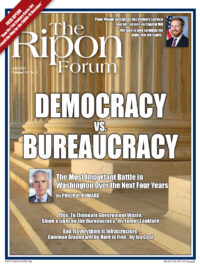
A sustainable Federal budget deficit used to be defined as being less than about 5% of GDP.[1] Today, the budget deficit/GDP is over 13%! Disaster, right? Should we expect hyperinflation to be coming? The short answer is no. Keep in mind we were in the same ballpark during the subprime mortgage crisis (10-12% for the budget deficit/GDP ratio) and the sky did not fall on our heads. Why not?
Back in the day with large deficits and the massive printing of money, sure, hyperinflation was a real concern and possibility. But in the subprime mortgage crisis we had a unique situation. During this particular time of turmoil, the U.S. was still the “safest cave” on the planet.[2] With all global economies “huddling in their respective caves” in the global housing crisis, we were in the best position. Consequently, massive global capital poured in and, to some extent, helped fund our budget deficit.
Massive monetary infusions ONLY erupt into mind-numbing hyperinflations when the money is actually injected into the economy.
This inflow of foreign capital was not enough to get us through the subprime mortgage crisis. But we also printed grotesque amounts of money, known as Quantitative Easing (QE). In fact, initially the Fed injected $48 billion per month, and later, $24 billion a month from 2007-15!
But, despite all this, there was no notable change in inflation. Here is a very important point: Massive monetary infusions ONLY erupt into mind-numbing hyperinflations when the money is actually injected into the economy. If it just “sits there” within lending institutions, then…no inflation! For example, the 5,500% inflation rate in the case of the Weimar Republic (Germany post-WWI), and the 41.9 x 1015 % rate for the last month of the Hungarian Hyperinflation (1946), were due to the fact that the money that was printed was already thrown into circulation – they were finally paying teachers, troops, farmers, suppliers, government workers, etc., who had not been paid for months.[3] The money was rapidly injected into the economy; in fact it was “already spent.” Ditto for Zimbabwe, Argentina, Brazil, Venezuela, and others.
Those inflation rates are staggering and are possible because injecting money into the economy is comparable to a snake bite. The venom (for most snake bites) is only lethal if it goes directly into the blood stream (or soft tissue). If it does not, you live. (Please do not test this example, I am not a global expert on venoms, but you get the point.) The same is true with monetary creation and hyperinflation. If the massive infusion of money does not slip into the economy, then no hyperinflation.
With today’s greater than 13% deficit/GDPratio, and the federal government’s huge infusion of money of over $3 trillion so far (perhaps going to maybe $8-10 trillion or more), is there reason for concern? Not at all. Same story, larger numbers. But this time we have a name for it: Modern Monetary Theory (MMT).
MMT basically works like this: In the subprime mortgage crisis, the massive printing of money did not bring about hyperinflation, as explained above. So Alexandria Ocasio Cortez (AOC) and Bernie Sanders have ran with this MMT theory. Their reasoning: Just print money! Print it for green jobs and for free college tuition. And now print it for the Biden stimulus plan. According to them, we printed money like crazy last time to bail out all the institutions that were “stuck” holding the rotten mortgage-backed securities, and the sky did not fall on our heads. The role of money should simply be to ‘get printed’ and pay for the massive government spending. So, doing this is not a problem. Print away!
The early warning sign will be a quick rise in long-term interest rates, thanks to the Fisher effect. Keep your eye on the yield curve!
The previously accepted ratio of 5% is gone. In a world where the U.S. is the “safest cave” and where there are NO other alternatives for scared global capital to be “parked” until the storms wear off, we can pull this off. There is no “ratio.” The upper limit? Gone!
Is there any risk to this? Yes, plenty! I call this kind of monetization, “Circumstantial Macroeconomics.” Just because it worked last time, we are assuming that we can pull it off every time. Imagine this: Some guy rakes all his fall leaves and stacks them in his back yard right by his neighbor’s fence. Then this genius lights a fire to burn off the dry leaves. Very dangerous! The neighbor is holding her breath, one hand on her phone, the other holding her water hose. But the wind is in the “right” direction, and the flames do not hurt her house. Now, lo and behold, this guy then tries this again every year, hoping that the wind will always blow in the “right” direction! “Circumstantial” behavior indeed! The question is, will the wind always be in the “safe” direction?
The bottom line is, do budget deficits matter or not? This cannot be a simple yes or no answer. Given the “perfect storm” of the confluence of all the macro factors since the subprime mortgage crisis and then since COVID-19, we have this phenomenon called MMT. As discussed, it is 100% “circumstantial macro.” If things change, that is, if confidence returns, if companies and households stop sitting on their savings and go on a splurge, and if capital investment takes off, then the inflation genie will be out of the bottle — once again. The early warning sign will be a quick rise in long-term interest rates, thanks to the Fisher effect [4]. Keep your eye on the yield curve!
Prof. Farrokh Langdana is the Director of the Executive MBA Program at Rutgers Business School and Author of five books on macroeconomic policy analysis. Langdana@business.Rutgers.edu
[1] Macroeconomic Policy: Demystifying Monetary and Fiscal Policy, Springer Press, Edition 3, Farrokh Langdana, page 35, for a description of the Dornbusch Model of Sustainability.
[2] Visit my blog page (including videos) for several blogs on this subject. https://www.business.rutgers.edu/faculty/farrokh-langdana and then scroll down for the blogs.
[3] The German rate is the annualized inflation rate, while that for Hungary is the rate JUST for the very last month of the hyperinflation (August, 1946)! Please see pages 134-48 of Macroeconomic Policy: Demystifying Monetary and Fiscal Policy, by Farrokh Langdana, Springer Press, Edition 3, for lots on this subject.
[4] From the Fisher Effect, r = i – (expected inflation), where I = nominal interest rate. If expected inflation is < 0, then real rates r are > 0.




